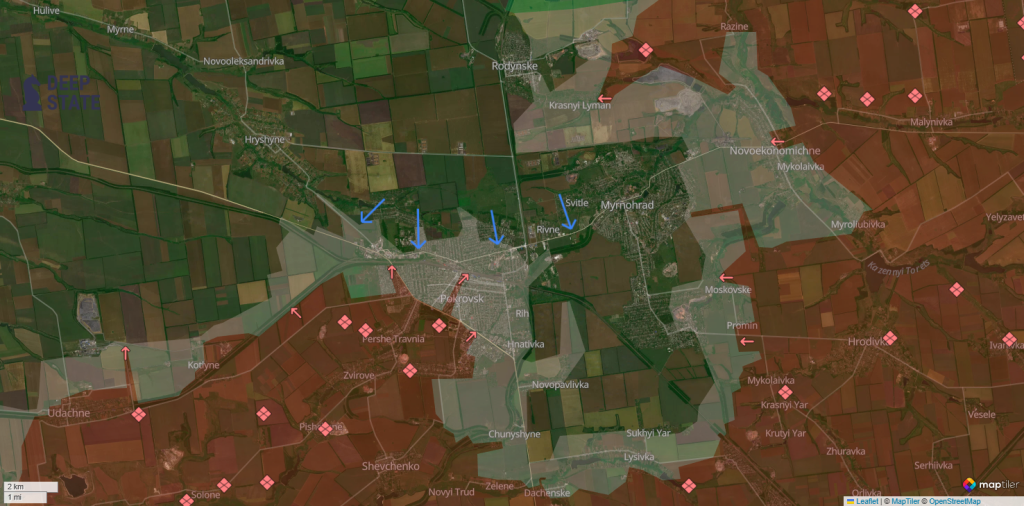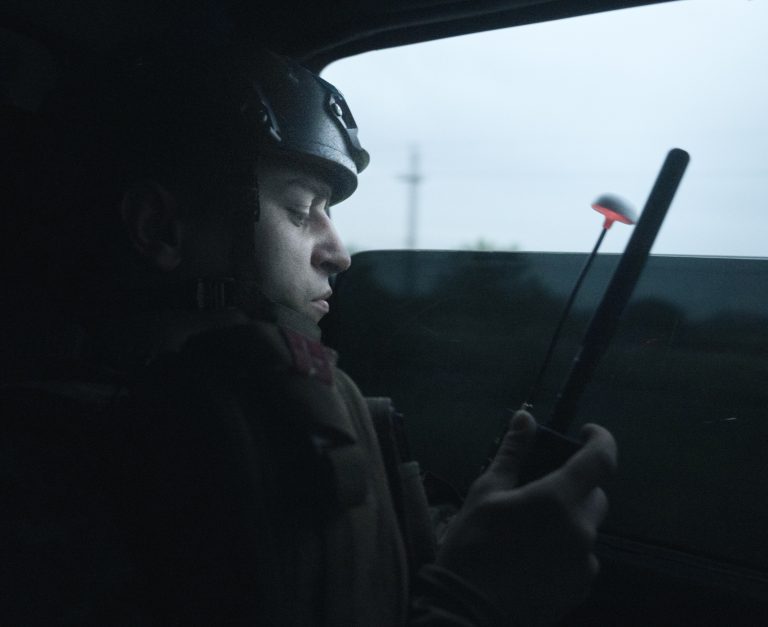The advance of the Russian army near the towns of Pokrovsk and Myrnohrad revealed a growing "infantry crisis" in the Armed Forces of Ukraine. The decline in the fighting-age male population has recently been highlighted by several global media outlets, although soldiers' rights activists have long sought to turn public attention to the problem of the infantryman shortage.
The commander-in-chief of the Ukrainian army, Olexandr Syrskyi, announced that Moscow had deployed some 150,000 troops to capture Pokrovsk; President Volodymyr Zelensky countered by saying that the city's defenses "remain." In an October 28 video interview, however, the Ukrainian leader admitted that Russian forces outnumbered him eight to one.
Desertions, buses and half a million men
Nearly 2.9 million people fled Ukraine during 2022, according to the Office of the United Nations High Commissioner for Refugees (UNHCR). During the war, that number rose to a staggering eight million, but many have returned (mainly from Europe) and the Commissariat now registers around six million, with around five million of them in Europe. The UNHCR has pointed out that 67 per cent of these refugees are women and children.
This "leakage" (outflow) of Ukrainian men has been in the tens of thousands per month, with the UN office recording the granting of more than 46 thousand temporary protection statuses in August, as well as 1,065 approved asylum claims.
In September this year, however, the number of decisions granting temporary protection status exceeded 73 thousand, the highest month-on-month increase since the start of the war and the highest number of statuses granted since August 2023.
The massive increase in departures from Ukraine is linked to the decision of Prime Minister Yulia Svyrydenko, who announced at the end of August the relaxation of travel restrictions for men from the demographic cohort of 18 to 22 years old. It was men aged 18 to 60 who were banned from leaving the country after the Russian invasion.
As the Atlantic Council, a Washington think tank, has pointed out, Western supporters of Ukraine have criticized, since the Joe Biden administration at the latest, the setting of conscription rules under which men over the age of 25 are subject to mobilization. It was the former US president who, towards the end of his term , proposed that this age limit be lowered to 18.
A certain section of the Ukrainian army vehemently opposed this proposal. This was most clearly expressed by Andriy Kryvushchenko, a lieutenant of the Sloboda Battalion, who explained that it was impossible to send 'the whole nation' to the front, because preserving the nation was at least as important as defending the territory. This, of course, is related to the fact that the Russians, after the failure of the so-called blitzkrieg, changed tactics to a war of attrition.
Since the beginning of the war, or more precisely since the beginning of mobilisation, the way in which the mobilised men are taken to the front has also met with public criticism. The term 'busification' describes the process by which recruiting officers literally abduct young, combat-ready men off the streets and load them into 'buses' (i.e. minibuses or vans).
This process has been most strongly criticised by Ombudsman Dmytro Lubinets, who has specified that the violence of the recruiters is "taking on a systemic character". Indeed, in several cases of such state abduction, a mobilised person has lost his life.
In order to achieve some fairness, Syrskyi responded to the recruiters' criticism and on 29 April ordered the workers of these centres to report to the front. In fact, by then some 36 thousand people were working in the hinterland, of whom only seven thousand were civilians. At the same time, this was in response to the transfer of soldiers from the air defence operational headquarters to the ranks of the infantry, which had reportedly been taking place since May 2024.
Not enough men to counter-offensive
Syrian predecessor Valery Zaluzhnyi, for the upcoming counter-offensive in the summer of 2023, asked Zelensky for half a million men to reinforce the thinning ranks of the infantry in eastern Ukraine. Meanwhile, in the second year of the war, according to then-Defense Minister Rustem Umerov, the Ukrainian army consisted of at least 800 thousand men.
Since then, the scales have tipped only in the superiority of drone technology, while the Russians have the upper hand in infantry strength (manpower), artillery superiority and supply. These are several reasons why the promised counter-offensive has not lived up to expectations.
Just as Kiev was not helped by technological superiority (of Western weapons) in 2023, it is unlikely to be helped this year either. Ukrainian soldiers serving near Pokrovsk themselves have warned of this.
In late October and early November, the Ukrainians moved several units on the front line in the city so that more men would move to its outskirts, a soldier codenamed Hus explained to Reuters. The reason, he said, was that the situation on the battlefield was "steadily deteriorating".
However, analytics portals such as Ukraine's DeepState - which contracted with the defence ministry early in the war - show on their maps a situation where Ukrainian soldiers, largely exhausted and without mandatory rotations, are slowly being pocketed.

Two weeks ago, the Russians already held at least half of the city's landmass, the dividing line being the railway line. But the Kremlin's interest is really in wearing down the Ukrainian army, hence the proliferation of calls for withdrawal.
"Ukrainian commanders must be prepared to retreat if necessary to preserve valuable combat power, while seeking opportunities to maximize enemy casualties," the Atlantic Council's call for retreat indicated.
Respondents to the UK's Financial Times made similar comments. "Despite the official heroic statements, the situation is more than complicated and less than under control," Vitaly Dejnega, a former deputy defense minister, wrote on Facebook.
The founder of the Come Back Alive Foundation, which supports soldiers behind the lines, said in a 4 November interview that Ukrainians "need to get out of these places while they can."
"All of this could have been prevented if we had more people and hundreds, if not thousands, of ballistic missiles," Artem Kariakin, a soldier from Pokrovsk, seconded the activist. "It would probably take a huge number of people to liberate a city of this size, and I just don't think we have them at the moment," he admitted.
The Ukrainian prosecutor's office also noted that it opened nearly 20-thousand cases of desertion during October. But not all desertions are recorded - indeed, soldiers often defect from a unit to join another, and "a significant number of newly mobilised soldiers defect before they reach their units", as an anonymous army source explained to the FT.
Since the beginning of 2025, an average of 15 thousand Ukrainian soldiers a month have deserted. The Standard covered this issue in late June, although we warned that the decline in troop numbers would not be linear.
Ihor Lutsenko, a former Verkhovna Rada deputy from the Batkivshchyna (Yulia Tymoshenko) party, published prosecutor's office statistics, according to which the number of deserters has grown to 54 thousand per year (from October 2024 to September 2025). At the same time, he added a staggering 235 thousand "unauthorized absences", i.e. unregistered defections.
As a commentator for the Marxist daily Junge Welt [which categorises the Federal Ministry of the Interior as left-wing extremist, ed. note] suggested, despite growing war-weariness, Zelensky "cannot be expected to take any peace initiatives". "The nationalists in Kiev have weapons," he noted, indirectly referring to a statement by former Right Sector member Serhiy Sternenko.
The latter told the Times in August that if Zelensky "offers unoccupied land as part of peace talks, he will be a corpse - politically and then actually." The supporters of the Azov forces and other extremist groups are thus apparently keeping a stranglehold on the country while it loses territory and soldiers.
